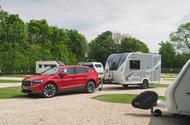Discovery D4-2 caravan is a relatively light 884kg
There are now many electric cars with which you can tow a caravan, but is it a good idea? We found out
Until quite recently, you would have struggled to buy an electric car that could tow a caravan, so rare were they.
Forward to today and you’re spoiled for choice of EVs with braked towing capacities ranging from 500kg to 2500kg. Given that the typical single-axle family tourer weighs around 1500kg, you can assume there’s one that can tow it.
But what’s it like to tow with an EV? What effect does towing have on range, and when you run out of power, how do you recharge it with a large caravan attached? To find out, I borrowed a Skoda Enyaq iV 80 and a Bailey Discovery D4-2 tourer and went caravanning.
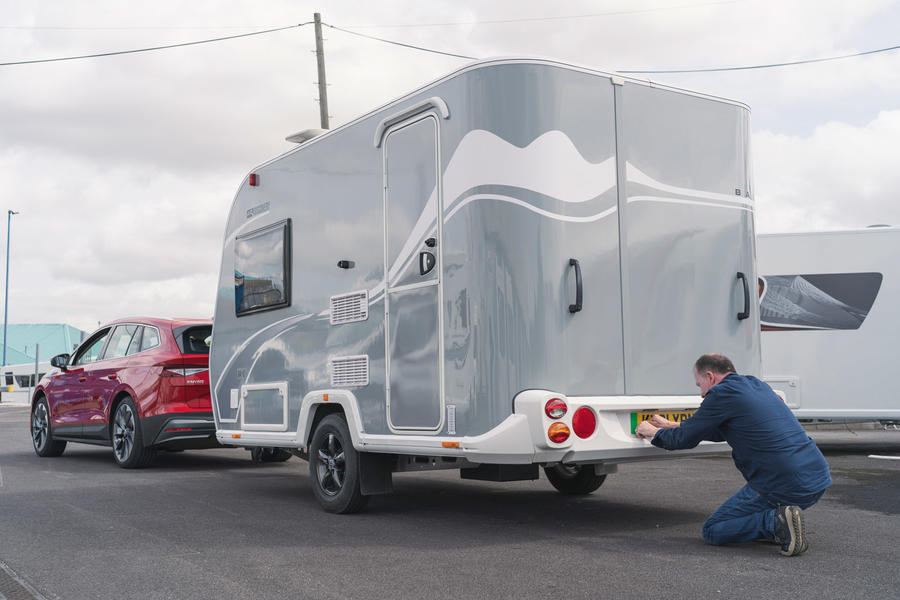
I chose these for their good towing match. What does that mean? Well, the Enyaq has a kerb weight of 2032kg and a braked towing capacity of 1000kg, while the Discovery has a maximum total permissible laden mass (MTPLM) of 995kg. To ensure the towing outfit remains as stable as possible, experts advise against towing a caravan with an MTPLM more than 85% of the car’s kerb weight.
Power and range-wise, the rear-wheel-drive Enyaq looked to be well up to the job, with 201bhp and 229lb ft on tap and a 330-mile range, courtesy of its 82kWh battery, which has 77kWh usable capacity.
To begin, I drove the Enyaq without the caravan from my home to an event at Brooklands – a round trip on a mixture of roads of only 38 miles. The trip computer showed the car had done 3.8 miles per kWh.
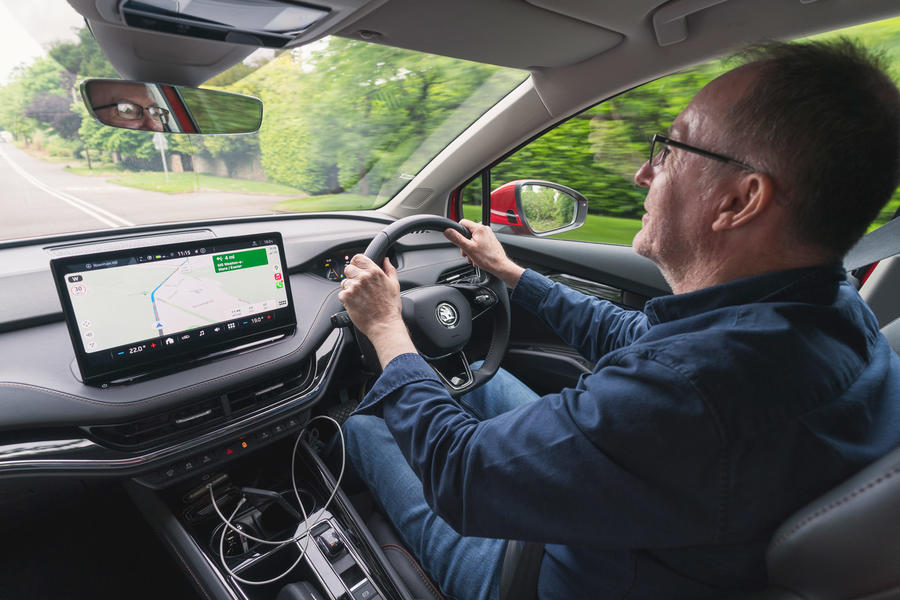
The following day, I drove to Bailey, based in Bristol, 105 miles away via motorway, to collect the caravan. On arriving at the factory, the trip computer calculated that the Skoda had returned 3.3mpkWh – understandable, given the higher driving speeds.
So, after two quite different journeys, the car had returned an average of 3.6mpkWh, giving it a potential real-world range of 277 miles. Now to hitch a caravan to it…
Thanks to the Discovery D4-2’s relatively light weight and compact dimensions, this bit was a doddle – at least after I had persuaded the Enyaq’s electrically powered tow hitch (a £995 option, including towbar preparation) to descend from its home behind the bumper. Rear numberplate affixed, electrical connections checked, runaway brake cable attached and tow hitch secure, the Enyaq and Discovery were good to go.
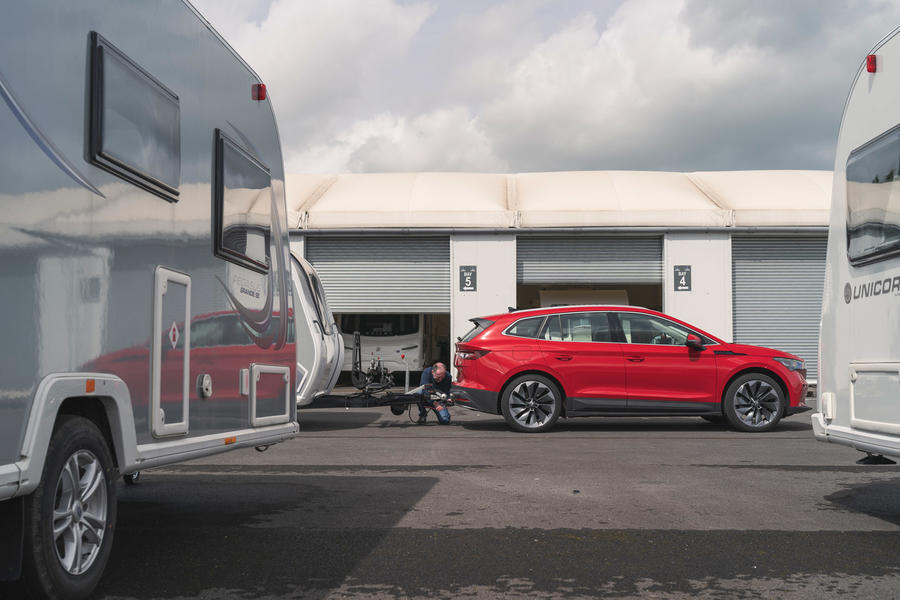
I had planned a reasonably long return trip of 60 miles – a journey that would take in a bit of busy Bristol, hilly rural roads and a stretch of the M5 to the midpoint destination, Greenacre Place Touring Caravan Park, just off the motorway at Highbridge.
With the gear selector in D/B to give the strongest regenerative braking, I cautiously pressed the accelerator and headed silently through Bailey’s factory gates.
I was immediately struck by the Enyaq’s smoothness and easy pulling power. Coming down to the T-junction at the foot of the hill from the factory, the regen slowed the outfit powerfully and progressively, almost without me needing to use the brakes. Up the other side to the M5, the Enyaq pulled the 995kg Discovery as if it weren’t there (I checked that it still was).
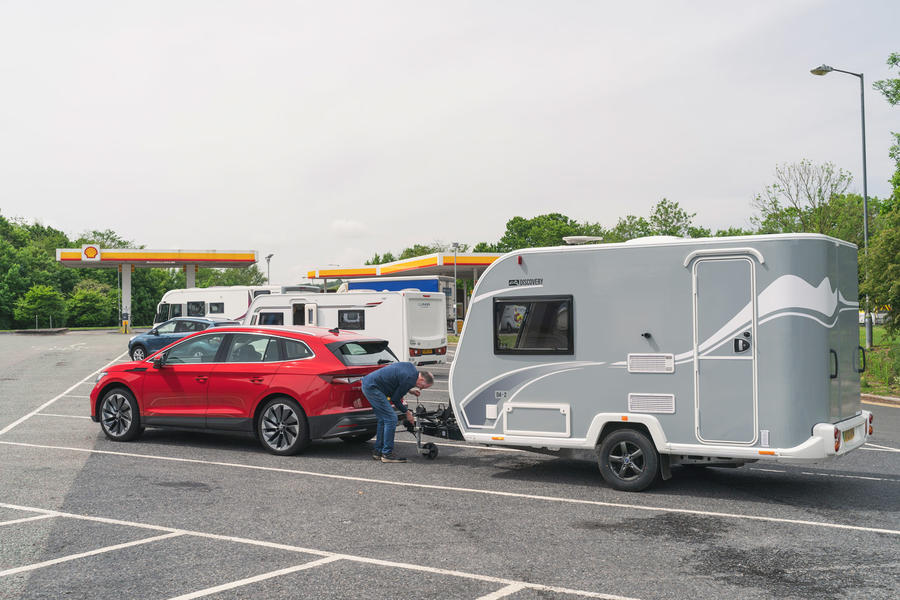
However, at the back of my mind was the need to charge the car, a prospect that, given all those horror stories about unreliable chargers, filled me with dread.
I had chosen to charge at Sedgemoor Services on the M5, where I hoped there would be plenty of space to unhitch and park the caravan and a rapid charger that would accept contactless payment.
On the M5, my anxiety abated as the Enyaq settled down to an easy 60mph cruise. However, at this faster speed, its range quickly began to fall. With it predicting 34 miles, compared with 107 miles when I had left Bailey just 26 miles ago, the services at last hove into view.
I debated whether to park in the car area, where the chargers were likely to be but where space for unhitching the caravan would be at a premium, or follow the signs to caravan parking and unhitch there. I did the latter.
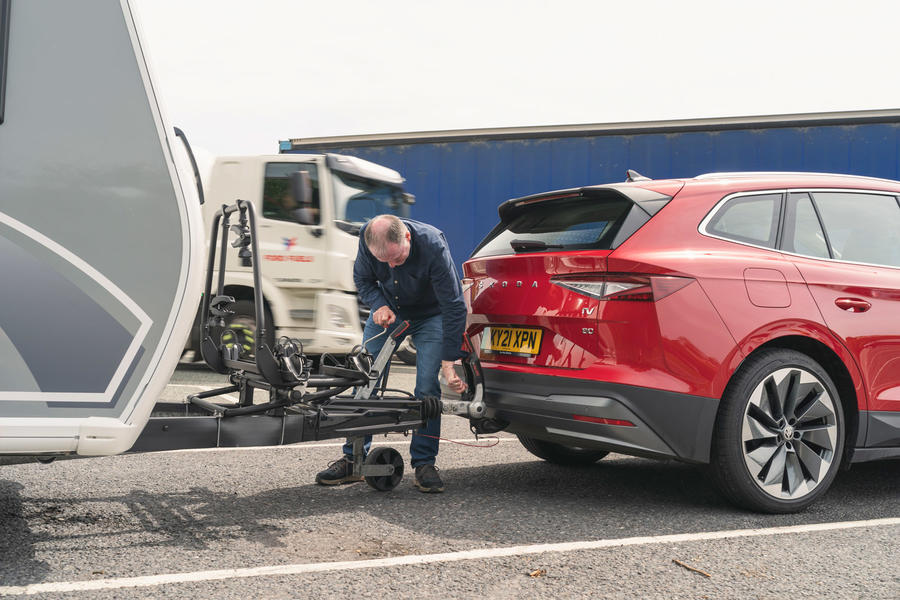
So far so good, except that, with the car and caravan separated, two things occurred to me. First, without a hitch lock securing it, the caravan was at risk of being stolen; and second, I had arrived by a one-way road used by HGVs and there was no road for going back to the car park.
I asked the cashier at the HGV fuel station what to do. “Drive back the way you came,” he said. “If you’re careful, you’ll avoid a truck.”
I took his advice and, cautiously negotiating a blind bend out of the lorry area, drove to the car park. The Enyaq has a CCS charging port, so I was able to hook up to a 120kW Gridserve charger. At this point, the battery was reading 19%, but after 30 minutes and an infusion of 22.40kWh costing £13.36, it was up to 50%. This restored the car’s range to 129 miles. That was enough, I decided, especially with the Discovery out of sight and unsecured.
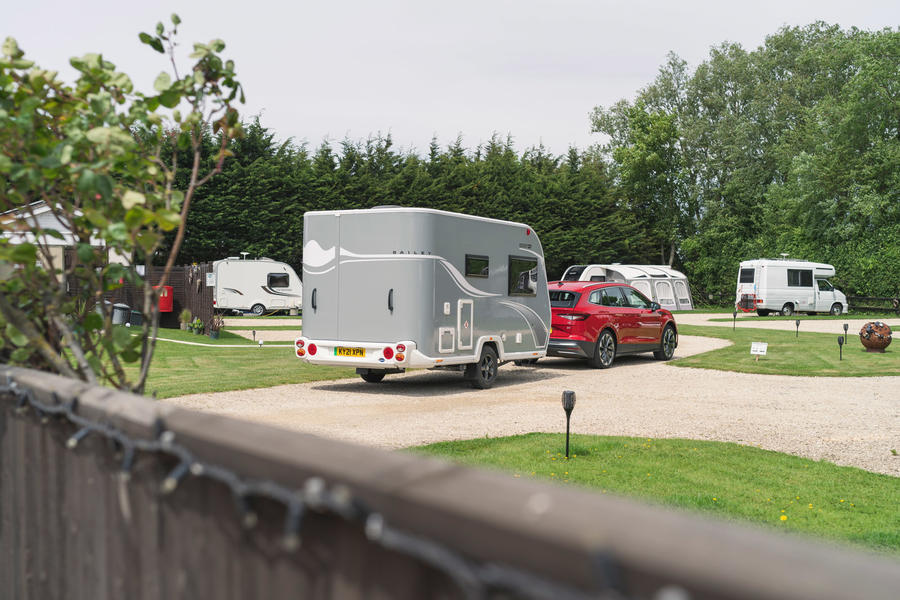
I returned to the caravan, hitched up and headed on to the campsite, just four miles away, to relax in the caravan’s well-appointed interior.
Later, back at Bailey, I did the sums. Over the course of 60 miles towing the caravan, the Enyaq had returned 2.0mpkWh. Multiplying this by the usable battery capacity gave a range when towing of 154 miles, or around 55% of the 277-mile range that I could expect to achieve when driving the Enyaq without the caravan.
So, what have we learned from this exercise?
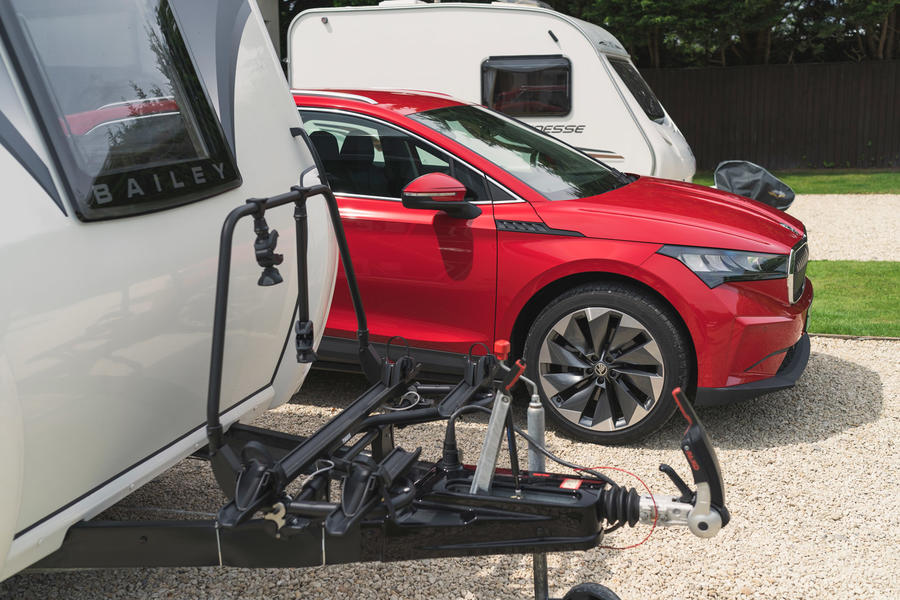
First, that with a well-matched caravan, the Enyaq is an excellent tow car, being powerful, smooth and stable. Its reversing camera enables you to back it up to the caravan’s tow hitch precisely, too. Towing sends its range plummeting around 50% but to a still respectable 150 miles, which is surely enough towing for one day.
Next, that fully recharging the 77kWh battery from empty using Gridserve’s 120kW chargers at motorway service stations (the company serves 85% of the UK motorway network) would cost around £46, equivalent to 30p per mile, which seems a reasonable sum.
And finally, that when considering charging at a motorway service station, it pays to check that there’s a safe, two-way access road from the caravan parking area to the car park chargers – and that a hitch lock is a good thing to have.
UK towing laws
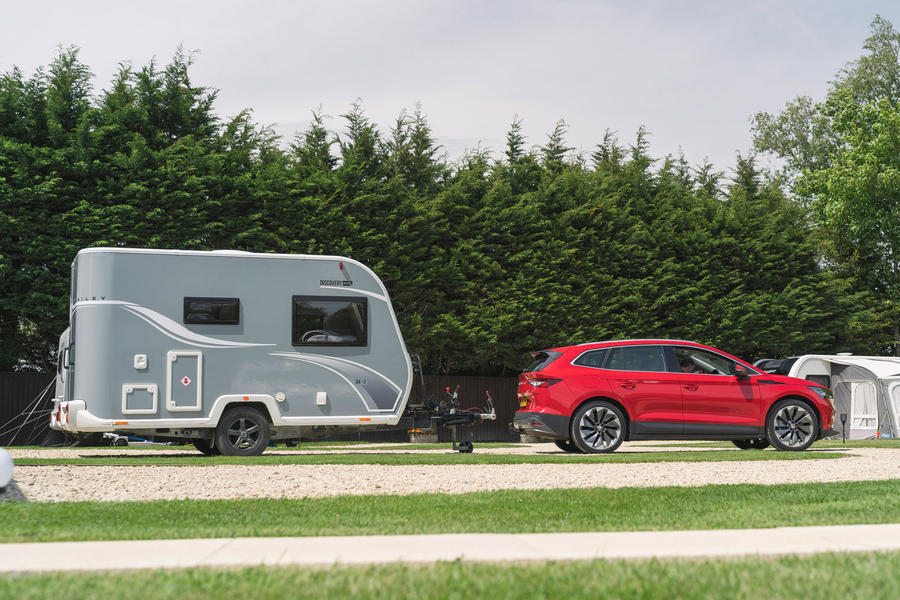
British law about towing a trailer changed for the better last year. Drivers who passed their test from 1 January 1997 can now tow trailers with a maximum authorised mass (MAM) of up to 3500kg, assuming the towing vehicle has sufficient capacity. As a result, car and trailer tests have ceased.
Drivers who passed their test before 1997 are unaffected and can usually drive a car and trailer combination up to 8250kg MAM. Check your licence to be sure. The DVLA urges drivers to get towing training and is backing a new trailer training accreditation scheme. For more information, visit safetowingscheme.co.uk.
The best electric tow cars
There are now more than 40 electric cars that can tow, and that’s not counting the various trim permutations. Here are our top picks.
Skoda Enyaq iV 80
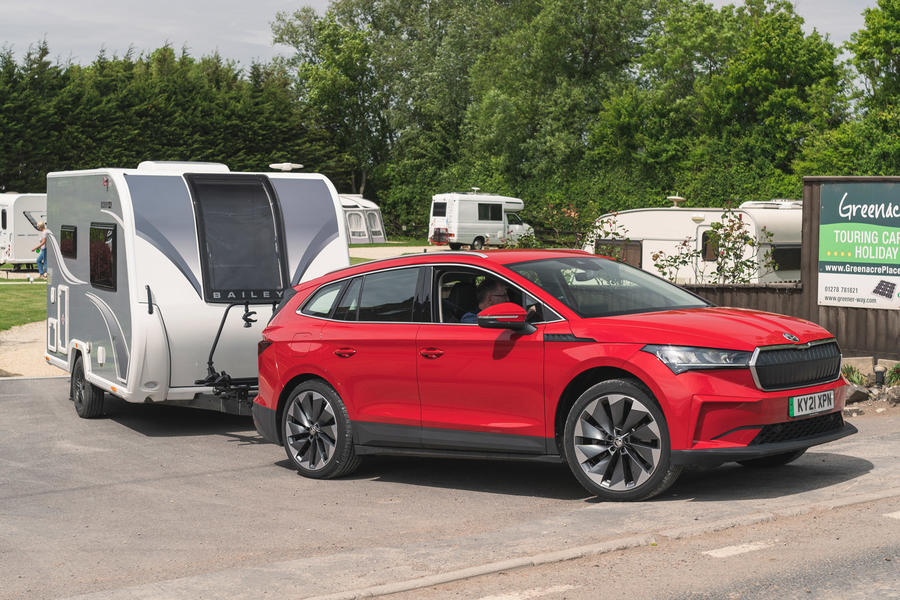
Matched with the right caravan, the Enyaq is smooth, stable and plenty powerful, with an impressive range into the bargain.
Kerb weight 2032kg Max towing weight 1000kg Price £40,970
Polestar 2 Long-Range Dual Motor
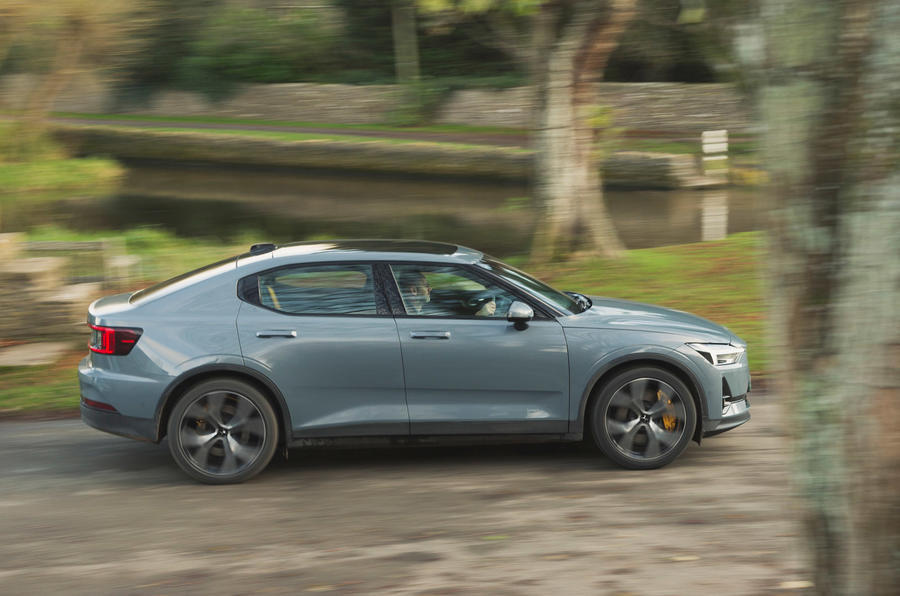
What Car?’s 2021 Electric Tow Car award winner will haul the typical family tourer without fuss all day, every day.
Kerb weight 2198kg Max towing weight 1500kg Price £47,900
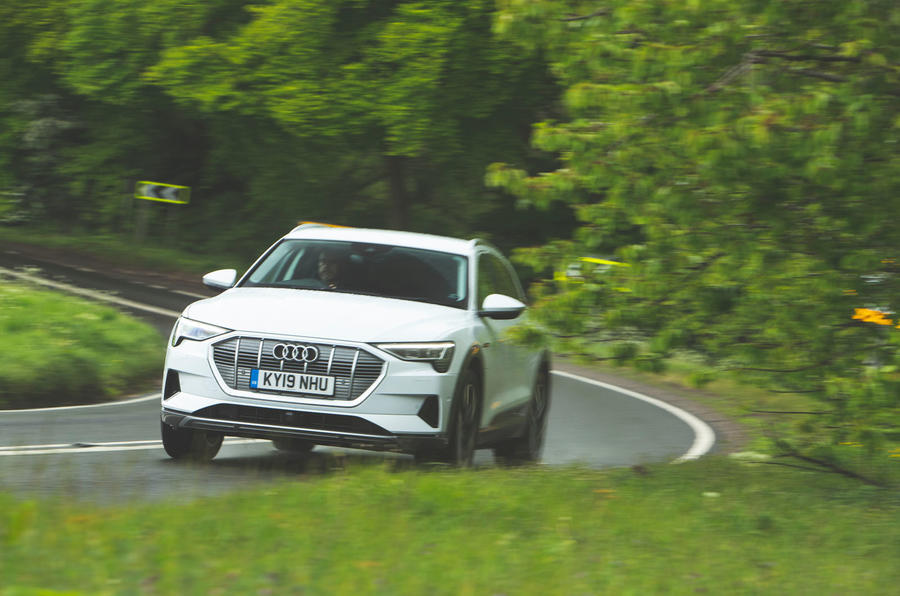
Awarded four and a half stars by our road testers, this big SUV impresses with its space, quietness, power and four-wheel-drive security.
Kerb weight 2565kg Max towing weight 1800kg Price £72,970
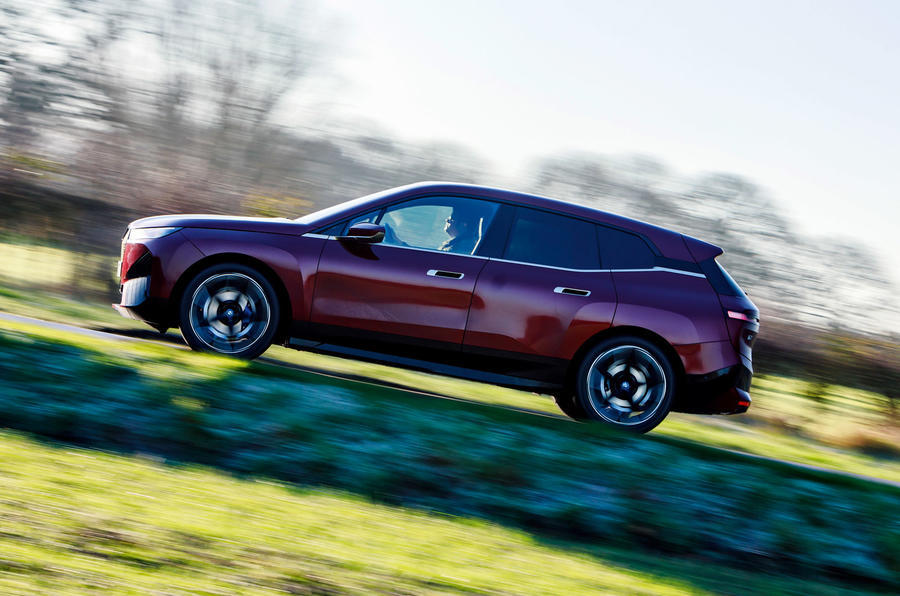
Our road testers praised this bigger SUV’s space, refinement and versatility, also awarding it four and a half stars.
Kerb weight 2585kg Max towing weight 2500kg Price £77,695
Source: Autocar
